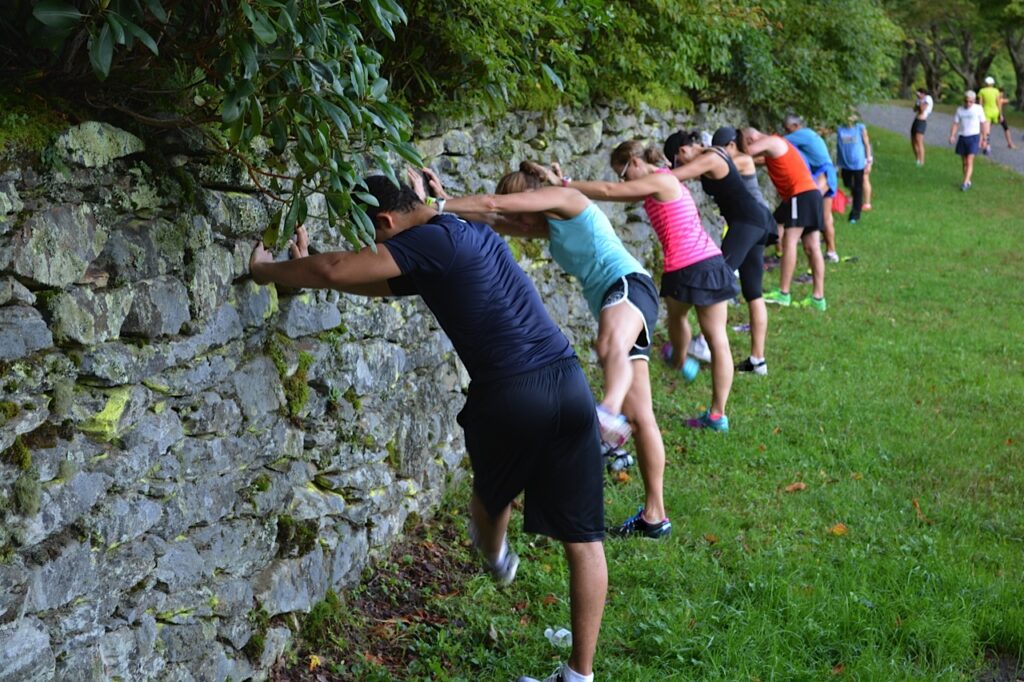A proper warm-up is essential to performing your best on race day and harder workout days. The goal of the warm-up is to activate the central nervous system and prepare the muscles for an increased range of motion and higher power output. For those who have been to our Running Vacations, you have been through a version of this warm-up routine before. For a reminder, and for those who haven’t, here is a step-by-step process for how to get the most our of your warm-up.
Warm-Up Run

The warm-up should begin with the running portion. The distance of this will vary depending on your level of training, but in general will vary anywhere from 1-3 miles. The first half of the warm-up should be done very easily – even a touch slower than your normal easy day pace. This is designed to gradually loosen and warm-up the muscles, getting the blood moving and gently increasing the range of motion.
The next 25% of the warm-up should be done at roughly your every day easy running pace. As you’ll notice the entire warm-up process is designed to gradually increase the range of motion in your legs and the demands placed on your body.
Finally, for the final 25% of your warm-up run, aim to run a little quicker than your normal easy run pace. The idea here should be somewhere in the range of marathon pace to 10-15sec/mile slower than marathon pace.
Dynamic Mobility
After you finish your warm-up run you’ll want to perform some dynamic mobility. You can find an in-depth explanation of why dynamic mobility is better for than static stretching for a warm-up here. But suffice it to say, dynamic mobility helps increase the range of motion without costing you anything in terms of power output.
The goal with dynamic mobility is to further increase the range of motion in your muscles so that when you’re ready to run fast there isn’t any resistance to that range of motion. It’s important to note there isn’t any need to push the range much farther than the range of your running stride. Ultimately the goal here is to eliminate that resistance so that you can fluidly move through your stride as you’re running quickly.
Dynamic mobility can consist of a range of movements but they should be running specific. Here are some examples of movements you can incorporate 2 sets of 10 of the following:

If you tend to be particularly tight in the hamstrings, quads, or glutes you can add some additional movements to this routine or repeat it more than twice.
If you’re interested in adding any drills to your dynamic warm-up that can also be helpful in priming the nervous system. You can find more information on those in Matt LoPiccolo’s Coach Chat on our IGTV page. Additional activation exercises such as clamshells, lunges, bridge, etc can also be implemented if you need a little extra help getting your glutes and hamstrings to fire properly.
Strides
Strides are the final step in the warm-up process and are intended to bring the entire routine together by introducing the body to race / workout speeds. Your stride sequence should look similar to the following:
- 2-3 x 20-25 second strides at or a touch slower than race pace
- 1-2 x 30-45 second strides at race pace
- 2-3 x 20-25 second strides a touch quicker than race pace
Take as much rest between each stride as you need to feel fully recovered before the next one, and aim to finish your final stride approximately 3-5 minutes before the start. Generally you’ll want to start this routine about 40-45 minutes before the start of your race or workout, but the exact time will depend on your running distance and how you move through it.